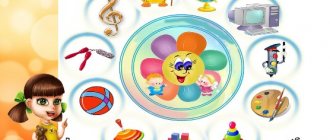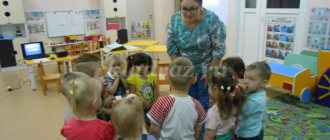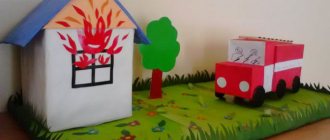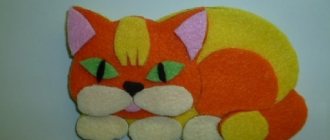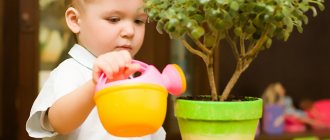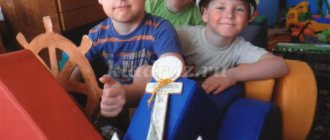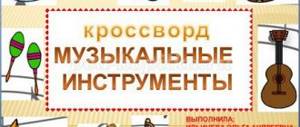Working with children before bed - goals and methods
Sleep is necessary to restore the baby's physiological and mental balance . According to sanitary and hygienic standards, its duration for children under 5 years old is 2 hours, for children under 7 years old - 1–1.5 hours.
Sleep is the basis of a child's health
In order for a child’s sleep to become a physiological habit, it is necessary to strictly follow the daily routine, down to every minute. Then, by the time the daytime rest begins, the child will be ready for it.
Many preschoolers have a thousand reasons not to fall asleep, so methodical work before daytime rest plays an important role. Its goals are:
- relaxation of children (reduction of anxiety and muscle tension);
- restoration of the normal state of the nervous system;
- relief of psycho-emotional stress;
- accelerating the process of falling asleep by creating a safe and comfortable environment.
To achieve his goals, the nap organizer faces a number of tasks that he has to solve every day:
- Preparing the room for rest. The best sleeping pill is cool air. The rest room should be cleaned and ventilated. In the hot season, it is recommended to open windows for ventilation (in the absence of drafts!) and while babies sleep.
- Monitoring children's readiness for sleep. Adults make sure that all children go to the toilet, wash themselves, wash their hands/feet, and change into clothes that are comfortable for sleeping.
- Creating a calm and relaxed atmosphere suitable for sleep.
Stages of work before bed: time plan
There are 3 stages of organizing daytime sleep.
- Preparation (15–20 minutes).
- Relaxation (5–7 minutes).
- Sleep (1–2 hours).
Preparation
The longest and most important stage. At the first stage, children play calm games.
Games for the first and second junior groups
Quiet games with objects:
- "Magic bag" The teacher invites the kids to put their pen into a bag of small toys and, without taking it out, guess what it is.
- “Pick up a figure.” Kids receive a set of geometric shapes (3-4 pieces) and blank stencils. Task: name the figurine and place it in the appropriate hole.
- Dominoes (lotto). If the kids are already familiar with team games, then you can offer them dominoes, in which animals are depicted on all the dice. Task: players need to find among their chips the one that will continue the line on the table.
Games for the middle group
Games for the middle group may include tasks for quick wits and ingenuity (but not only):
- Folding given figures from mosaic elements occupies a leading place in the card index of games before bedtime for children 4–5 years old.
Mosaics and construction sets not only train coordination, develop the child’s thinking processes, but also perfectly relax
- "Sharp eye". We show the children a jar or bowl. Their task is to estimate the diameter of the container opening and cut out a lid of the appropriate size from cardboard. The one whose cap matches exactly wins.
- "Repetition." The teacher names a topic (usually close to the one that was in the lesson before lunch), on which the children select words. The kids complete the task one by one, and when they say their word, they repeat those that were voiced earlier.
Games for senior and preparatory groups
These can also be motor games, after which you can tell a fairy tale or do breathing exercises:
- “Grandma went to the market and bought...” The presenter says: “Grandma went to the market and bought a meat grinder” - he imitates the movement of the meat grinder with his hand. The next participant says the same phrase, but instead of a meat grinder he names something of his own (for example, a coffee grinder, a sewing machine). After the arms, movements for the legs are called (the main thing is that the “purchase” can be shown with a simple movement). Imitating the movement of the named object, the child does not stop turning the meat grinder. The point is to do all the movements at the same time.
- "This is my nose." The kids sit in a circle. One touches his chin and says, “This is my nose.” His neighbor touches his nose but says, “It’s my chin.” The point is to talk and show different parts of the body (you can limit yourself to one face or head).
- "King of Silence" One baby - the king - sits on a chair, the rest stand around him. The monarch points to any child and gestures to him. This is how he chooses his ministers. If the “minister” makes even the slightest noise along the way, he is eliminated. It’s the same with the king: if he makes a noise, then he is overthrown from the throne and put in this place the first minister, who reached the royal person silently.
It is advisable to involve all the children in the games.
Fairy tales
Children love fairy tales very much. And in younger groups, due to age-related slowness, there is no time left for games, so reading aloud is the best technique. Although older children will be happy to listen to the exciting story.
- "The Tale of the Deer Who Couldn't Sleep."
- Iris Review “How Tisha searched for sleep.”
- Andrey Prokofiev "Hare's Foot".
- "The Tale of the Rhino who Couldn't Sleep."
- Natalya Yashchenko “How the Striped Tiger Cub was looking for treasure”, etc.
Calendar and thematic planning “City of Masters. Professions", (regional component)
Plan of educational work with children 5-6 years old
Subject
:
"City of masters.
Professions" (regional component) Program content
:
1. Continued acquaintance of children with folk traditions and customs, folk arts and crafts.
2. Expanding ideas about folk toys. Acquaintance with decorative and applied arts (Khokhloma, Gorodets painting, Ural painting, etc.).
3.Telling children about the art, traditions and life of the peoples of the Southern Urals (features of buildings, household items, national clothing, etc.).
GCD by educational area
:
NGO "Cognitive Development"
Conversation (FCCM)
“Journey in the profession.”
Expand and concretize children’s ideas about people’s professions, continue to get acquainted with people’s professions, create a positive emotional background in the group, clarify and expand children’s vocabulary on the topic, develop interest in the professions of loved ones, cultivate a respectful attitude towards people of different professions.
Construction of the “City of Masters”.
Children will strengthen their skills in building single-story and multi-story houses of various designs. Develop teamwork skills, teach children to unite their buildings in accordance with a common plan.
NGO "Social and communicative development"
Conversation about professions.
To develop children’s communication skills, expand their ideas about family, teach them to navigate family relationships, and expand children’s knowledge about people close to them; to form ideas about representatives of different professions, their work, to consolidate children’s knowledge of the profession of parents and other family members.
NGO "Speech Development"
"In the city of professions."
Expand and concretize ideas about people’s professions, consolidate in speech a noun with the general meaning of “profession”, improve the grammatical structure of speech (practice in the formation of adjectives from nouns, agreement of numerals with nouns); improve skills in constructing simple and complex sentences; develop speech activity, dialogical speech.
“Reading HL” by D. Rodari “What crafts smell like.”
Introducing children to different professions, enriching vocabulary, developing coherent speech, the ability to answer questions,
education
of a spiritual and moral personality.
Artistic and aesthetic development"
Drawing. Decorative ornament based on folk crafts.
Learn to conceive and execute a pattern based on folk crafts. Strengthen the ability to convey color and elements of folk ornament. Strengthen the ability to arrange a pattern depending on the shape of the sheet. Foster love and respect for folk art.
Application.
"Nizhny Tagil trays."
To strengthen children’s ability to decorate “trays” (cut out of colored paper of various shapes) based on Nizhny Tagil painting. Learn to place the pattern not only in the center, but in the corners and on the sides. Cultivate an interest in arts and crafts.
"Music"
Introduce different tempos of performance of a piece, changes in rhythm. Encourage children to perform dance movements.
Listening to “Song about Spring”, music by G. Frida, lyrics by N. Frenkel;
Musical and rhythmic movements: “Invitation” U.N.M., arr. G. Teplitsky;
Dramatization “Game with colored handkerchiefs” by music T. Lomova;
Game “Riding along the path” music by A. Fillipenko;
Play at the DMI: “Orchestra” U.N.M.
Dance and play creativity: “The apple was rolling” music by V. Agafonnikova.
NGO "Physical Development"
Learn to maintain balance while walking on the narrow rail of a gymnastic bench. Strengthen the ability to hit the ball in motion with one hand (right and left). Practice skiing with a sliding step, avoiding encountered obstacles.
- p/i “Trap with Ribbon”, “Whose column will be built faster?”, “Ball School”, “Fast and Accurate”.
Subject-based development environment for independent educational activities:
— d/game “Playing in the profession”
— objects of Zlatoust engraving on steel, Kasli casting; Zhostovo tray, Khokhloma dishes: to form a caring attitude towards objects of the man-made world;
— illustrations depicting folk toys;
- folk musical instruments in the music corner;
— photos, illustrations on the topic “Our City” (use of Kasli casting, Zlatoust engraving in the design of streets and city buildings);
- to the book corner “Malachite Box”.
Recommendations for parents for carrying out educational activities in the family on the topic:
Ø Tell your child about your profession: name, what the work is, is it interesting to you;
Ø Talk with children about the professions of carpenter, carpenter, welder, tailor, shoemaker, artist, etc.
Ø Go with your child to the post office, where you will draw his attention to the work of postal workers. Tell us about the professions of postal workers (postman, telegraph operator);
Ø Show your child the correspondence that you take out of the mailbox: newspapers, magazines, letters, postcards; review them with your child; Show the child the package;
Ø Show the child a letter, postage stamp, envelope, telegram, read where the letter, telegram came from; tell us how the letter and telegram got to your house from another city. Show how a written letter is placed in an envelope, sealed, an address is written on the envelope, and the letter is placed in the mailbox with the child;
Ø Read to children P.P. Bazhov’s tales about working people, about artisans;
Ø Introduce your child to the DPI: Zlatoust engraving, Kasli casting, Ural painting, etc.
Joint educational activities on the topic in special moments
:
Morning:
— situational conversations “Rules of personal hygiene”: to consolidate the ability to establish a connection between the action performed and the health of the body;
- travel game “Walking around the city” (city theaters (photo)) (to strengthen the ability to say your last and first name; last name, first name and patronymic of parents, home address and telephone number).
- drawing up a diagram of a safe approach to kindergarten on the board.
- mark on the map of the Urals the city of Zlatoust (steel engraving, gunsmiths), the city of Kasli (Kasli casting), talk about these crafts, introduce them to their samples;
- game experimenting with water “Making a fountain”. Objectives: study the properties of water.
- game situations: “Let’s make a gift to each other in a circle”, “Let’s dance and find the magic words”, “Who will build a house faster.”
Hygiene procedures:
— situational conversations with the aim of developing skills for independent care of oneself and one’s body: hand washing scheme, dressing/undressing scheme; introduction of the “stacked bed” scheme;
— conversation “Bad and good habits.” Objectives: to form the need for compliance with the daily routine, physical activity during the day
- situational conversation with the aim of improving food culture: use cutlery correctly, eat carefully, silently, maintaining correct posture at the table, make requests and give thanks;
- situational conversation about hardening, its importance for human health.
Breakfast, lunch, afternoon snack, dinner:
- a situational conversation about the characteristics of the child’s body and own health (I can’t eat oranges - I have allergies, I need to wear glasses);
- situational conversation about the dependence of human health on proper nutrition, to develop the ability to determine the quality of products based on sensory sensations;
- situational conversation with the aim of strengthening children’s skills in the safe use of forks and knives while eating;
— situational conversation with the aim of developing the ability to determine the quality of products based on sensory sensations;
- a situational conversation with the aim of expanding ideas about the components of a healthy lifestyle - proper nutrition and factors that destroy health, about the traditions of Russian national nutrition.
Walk
- observations of:
-sky: the color of the sky changes depending on the time of day and the weather. Snow clouds, white fluffy clouds are floating across the sky, driven by the wind.
-by the wind: where does the wind blow from, determine the strength of the wind by the swaying branches of trees, what is wind? Signs: cloudless, north wind - it will be frosty.
-by the sun: the day arrives in spring, the sun is higher above the horizon. Signs: snow is falling in large flakes - a thaw
-behind the icicles, pay attention to how they have grown.
-after the first rain, note the characteristic features of this phenomenon in spring
- outdoor games: “Squat traps”, “Fast and accurate”, “Whose column will be built faster?”, “Ball school”, “Hit the ball”, “Ribbon trap”, “Ring throw”, “Who can jump better”
-sports games: “Hockey”: dribbling the puck with a stick, passing the puck to each other.
- work on the site, shoveling snow to the trunks of trees and bushes, helping the teacher in spreading snow on the territory of the group site.
-activities of children's choice: experimenting with water (color ice), relay games, games with several partners, round dance games, games with rules; outdoor games using attributes.
Evening:
- situational conversation about the rules for the safe use of scissors, needles, sticks, glue
- work with the “City - Worker” scheme (indicate with a symbol the place where parents work). Children's stories about what enterprises their parents work at
— organization of theatrical activities, the possibility of using various types of theater for independent performance of folk songs and fairy tales;
- create conditions for independent production of folk toys from paper and clay in the arts and crafts corner: consolidate the ability to make folk toys with your own hands;
- create conditions for visual and creative activity - work with clay or plasticine “Plasticine fantasies”;
- talk with children about the Russian hut and other buildings, their interior decoration, household items, and clothing.
— organizing the exhibition “Folk Art” with the help of parents.
An evening walk:
- observing the signs of spring (rain, frost, wind), changes in nature, learning to be observant; clothes of passers-by (changes in clothing), plants (spring awakening of plants - poplar, lilac); the moon and stars: the moon is waxing and waning, full moon and new moon; evening sky: pay attention to the moon and stars, what phase the moon is in. Signs: few stars in the sky - bad weather. The sky is without a moon, strewn with stars - tomorrow is a frosty, clear day.
- outdoor games: “Trap with Ribbon”, “Whose column will be built faster?”, “Ball School”, “Fast and Accurate”, “Who will jump better”, “Whoever is named, he catches.
- games - relay races: “Fun competitions”, “Who is faster”.
